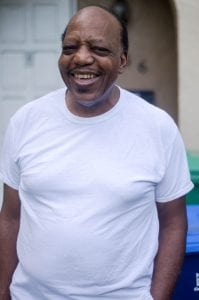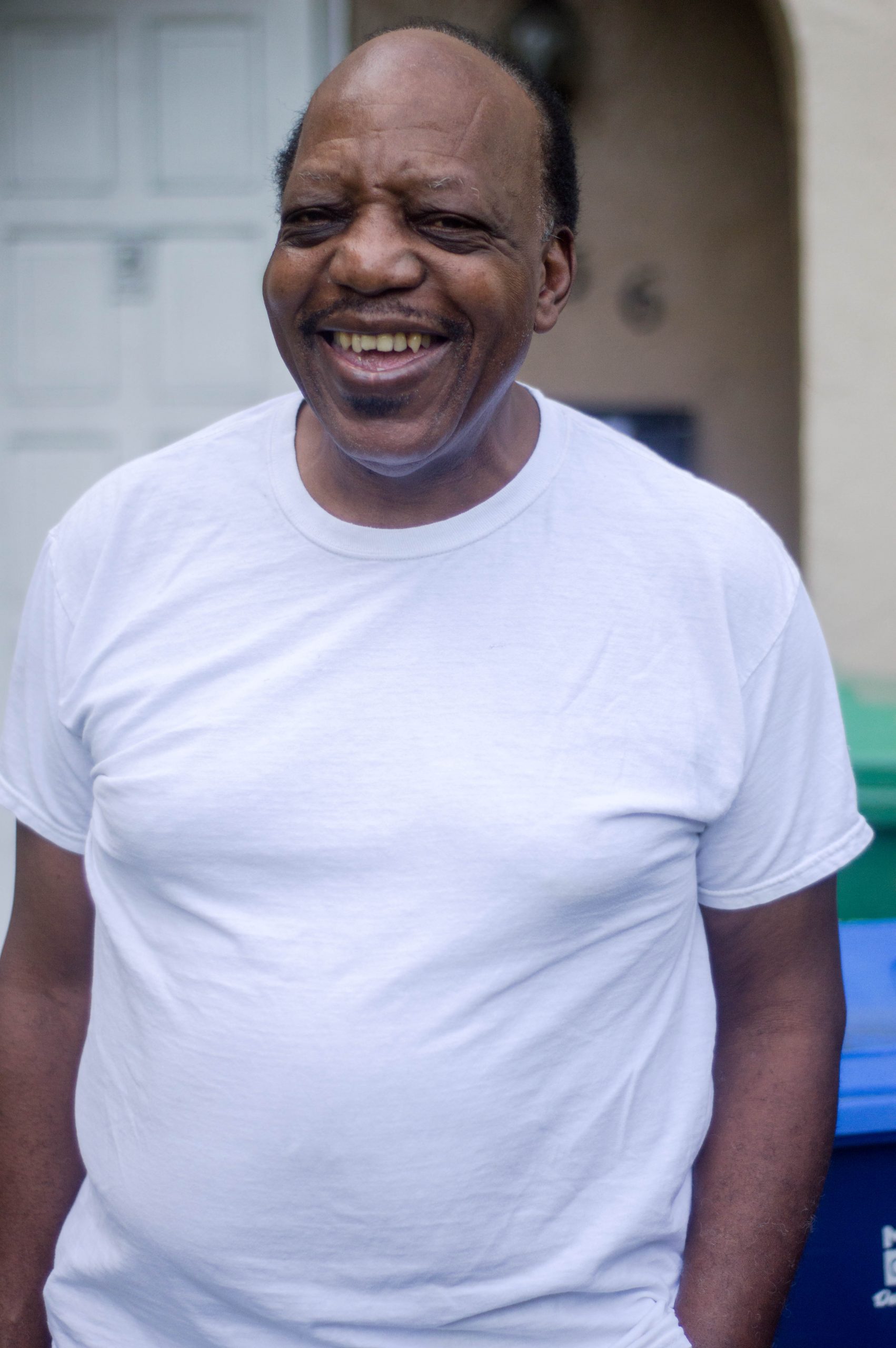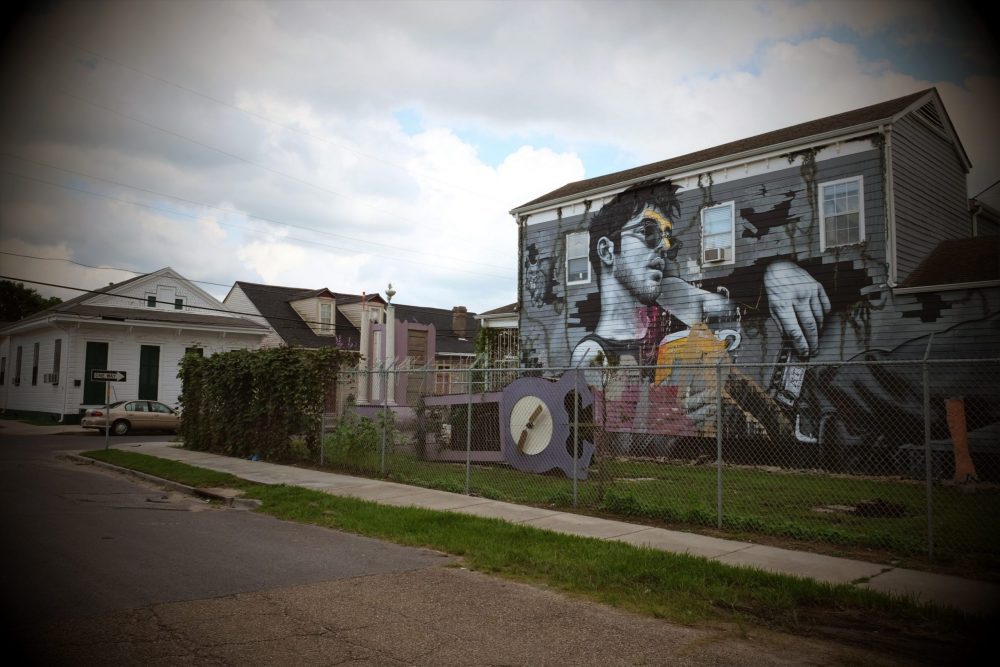
Willie Ray applied for a loan at Community Ventures in 2011 to expand his business to an independent location. In January 2013, No Limits Innovative Strength Training celebrated its grand opening in Lexington, Kentucky. Photo courtesy of Community Ventures
It wasn’t always about credit scores.
Before the three-digit figure became the most-used way to determine a person’s creditworthiness, home and business loan approvals were based on a person’s perceived character. That was back when community banks—where bankers and loan officers knew neighborhood residents because they came from the communities they served—were much more prevalent.
Those seeking loans didn’t have to worry about a credit score, a system that took off in the 1990s with the FICO scoring model. They didn’t have to worry about assets either. Instead, their reputation, or who their parents were, is what loan officers used to decide whether to give a loan application the green light—or not.
Under this system it was much easier for some folks without assets to get a loan and grow their wealth. But it also meant subjectivity and bias played into the decision-making process. Communities of color were left out of the lending circle.
“Many white families began their asset ownership with their first home in a [community banking] system,” says Kevin Smith, the president and CEO of Community Ventures, a community development financial institution (CDFI) in Kentucky. “African Americans, at the time, were almost entirely prevented from participating in that system through redlining and Jim Crow laws.”
Now that lenders mostly decide on applications using a person’s credit score, which doesn’t typically include regularly paid items that lower-income families pay, such as rent, utility bills, and the like, it’s more difficult to build wealth. And far from gaining an even footing, those who were kept out of the system during the days of character lending continue to face hardships building credit.
When we were doing character loans through community banks back then, banks weren’t going under, we weren’t losing a lot of money.
For example, discriminatory rating systems used from the 1930s through the 1970s identified communities of color as “high risk,” so people of color had limited access to credit and thus were relegated to fringe lenders. These communities were also targeted for subprime loans, which carry much higher interest rates and shorter repayment periods, making it more likely that they would have a poor payment history—which plays a part in the credit score calculation.
“The system has raised the bar so much,” says Smith, who is white. “We’re asking [African Americans] to build wealth and assets under a very different model than what we were able to build assets under.”
Character loans are rarely, if ever, done at large banks nowadays, but some CDFIs have used them, and have also reviewed nontraditional credit like rent payments, to evaluate a person’s creditworthiness. Community Ventures, which covers urban and rural areas in Kentucky, and the Opa-locka Community Development Corporation in Miami-Dade County, Florida, have each approved loans based on an applicant’s character, and representatives from each CDFI hope to continue expanding that model for future loan opportunities.
Someone Knows You: Character Lending
For 14 years, Opa-locka CDC has approved character-based loans for real estate transactions, mostly loans to rehab properties and second mortgages. The nonprofit serves the city of Opa-locka, where the average median household income is $18,134 and the poverty rate is over 40 percent, along with northwest Miami-Dade County. The city is a financial desert, says Willie Logan, the organization’s president and CEO. It has only one bank, which sits on the border of the community.
“I don’t know of anyone in the community who has ever gotten a loan from them, including me,” he says.

Mr. Grant’s loan application was approved by Opa-locka CDC based on his character and not his credit score. Photo courtesy of Opa-locka CDC
There are, however, payday lending institutions on almost every block, not an uncommon sight in low-income neighborhoods. The character loan initiative began after staff at the CDFI noticed that a lot of the city’s residents didn’t have established credit, or they had terrible credit scores. These were people who the CDFI’s loan officers had known for years, people who always worked and were responsible, even if they occasionally paid a bill late. Because of bad or nonexistent credit histories, these residents were only qualifying for loans that had double-digit interest rates. (And higher interest rates make it harder to pay back a loan, which in turn continues the cycle of low credit scores and no assets.)
That’s when Opa-locka CDC board members and staff began vouching for loan applicants. They would make a presentation to the loan committee in terms of their knowledge of the applicant, which would be taken into consideration, Logan says. Because the nonprofit is working with housing-related loans, there’s always collateral. “We’re providing a financial resource at affordable terms they can qualify for. What that does is keep the housing stock better, it allows people to stay in the community and live with dignity and [in] quality housing. . . . ” says Logan, adding that loans are structured so a person “could still eat and pay utilities.”
That means the loans, at single-digit percentage payback rates, could have a 5-, 10-, or even 15-year repayment term. Applicants generally know someone on staff because they’ve utilized the CDFI’s housing counseling and/or credit repair services, they’ve attended a workshop, or because they are seniors who recently heard a presentation about the nonprofit’s loan programs at a luncheon event. “We feel very comfortable considering people’s reputations and their character to make loans regardless of what their credit score is, particularly if they can show their income to make the payment,” says Logan, who believes that his staff really knows the community because several have served in public office (including Logan, who at one point was the city’s mayor), and they have lived in town for decades, if not all their lives. “Our environment gave us a lot more comfort with doing [character loans, but] to say that it’s applicable in any situation, I couldn’t,” he says.
In all the years the CDFI has approved loans based on a person’s character, not one loan has defaulted. But there have been people who were late making payments. When that happens, a call—which is more like a guilt trip—is made to the person who took out the loan. Borrowers know how much the low-interest loan has helped them, and they don’t want the program to end because they didn’t pay their loan back, Logan says. That tactic has been successful.
“It’s not like you’re going to get a letter from us saying ‘You’re two weeks behind and do respond or we’re foreclosing.’ We’re not interested in foreclosure. We’re interested in people paying back their loan. “It’s very personal, particularly to the person who recommended them for a character loan,” he says.
What if no one on staff knows the applicant?
The CDFI will bring the person in to their offices for an interview and ask them to provide references. “Before it’s all said and done, someone on the board or somebody on our staff will know their family. It’s just the way it is,” he says. “However, if no one knows the applicant, it’s difficult to make a character loan. But I don’t know any instances where we didn’t know somebody.”
And character lending does go both ways, says Logan—there are cases where they don’t make loans because of what they know about someone. While Opa-locka has been fairly successful in mortgage lending, the challenge is bringing character lending into the business loan realm, says Logan. “We haven’t figured out how to address the non-collateral issue, because oftentimes in business lending, they might not have real estate like a house or a building, or maybe even own their own equipment.”
For Business Too
That hasn’t stopped Community Ventures. For decades, business lending via character loans has been part of the mix for the CDFI, whose territory spans rural areas like the Appalachian region to urban locales like Lexington and Louisville.
The business and housing lender began as a CDFI 25 years ago with the Grameen Bank model for business lending, where small entrepreneurs, typically those with low incomes who didn’t have capital or credit, received training and technical assistance to put business plans together. A loan applicant then made a presentation to this group of peers, who decided whether the applicant was approved for a loan.
“It allowed people [who] didn’t have credit or collateral to begin to participate in the lending system,” says Smith. However, there were some issues with the program and applicants were unwilling to share information and cooperate with one another. Smith attributes that to culture. “Americans are much more competitive with each other,” he says, adding that the model was founded in Bangladesh.
That’s when character lending began for Community Ventures, and since then, the CDFI has approved about 1,500 loans using that tactic, Smith says. It starts off with staff working with applicants to put together a business plan. They then determine whether the applicant is working hard to put that proposal together, and whether they’re following a prescribed strategy to improve their credit score.
“We just watch how they handle themselves and how hard they work to get the job done. We get to know them through the process.”
Sometimes the process can take as long as six months. Other times, if the applicant has some business acumen, it could be as short as 60 days. “But there is a process for us to get to know them and that’s the biggest determination on our start-up business loan,” says Smith.
As with the Opa-locka CDC, Smith says lenders have to come from the communities the nonprofits serve. “We learned [that] a long time ago. In our satellite offices, we hire staff from the local community and that helps bridge the gaps or the differences in the populations we lend to,” Smith says, which live in both urban and rural areas. “By bringing back community lending and making capital available so that everyone has the same opportunity at the American dream, then you give everybody hope and the dynamics in some of our low-income communities can begin to change,” he says.
When Community Ventures started its character-lending program, you could count the number of African-American businesses that belonged to the Lexington Chamber of Commerce on one hand, Smith says. The last time he checked, however, more than 100 businesses led by African Americans belonged to the chamber.
“That’s what keeps this whole argument fueled. I’ve seen the real impact of character lending,” he says.
Looking Ahead
More than two decades ago, the average business loan approved at Community Ventures was about $700 to $800. Now, it’s $11,000. While a significant jump, that figure is still a far cry from the amount needed for a first mortgage, the place where Smith says character lending is most needed.
A home is the biggest asset that most Americans have to use for retirement, send their kids to college, and escape poverty. “That’s the asset that really moves people forward,” Smith argues. He wants to bring the community-lending model back to first home mortgages to close the ownership gap, but that’s a systemic change that requires a large, concerted effort.
“It’s the amount of capital needed. Even if you find people of good character that you feel are a good risk but they don’t qualify [for a loan] at a bank . . . you could only make what your portfolio will allow,” Smith says, pointing out that investors must purchase those loans or there’s no way to keep funding going for making those long-term loans. “So you might be able to do $1 million in loans, but in reality, that may be 10 loans. So that’s a big issue. . . . If our federal government continues to focus on how to make getting loans harder, then all they’re doing is exacerbating the injustice.”
Community Ventures has created a first-mortgage fund that allowed it to approve, in partnership with other banks, loans for people who had lower credit scores. That program would qualify the loan for purchase by Fannie Mae, “but that’s still not character lending,” says Smith. “We’re still basing it on something whites didn’t have to use 50 years ago.”
People of color across the country “want to take part in the American dream,” says Smith. “But they face a much bigger challenge doing that than many white folks did when they were starting out. So if you’re trying to close that asset ownership gap, we have to look at the system that allowed us to get so far ahead.” When character loans were done through community banks, banks weren’t going under, and they weren’t losing a lot of money, says Smith. “There is a way to do it.”
Opa-locka CDC plans to roll out a business lending program in October after receiving a grant from Chase and partnering with the Community Reinvestment Fund in Minneapolis. Staff will specifically seek out folks who have been in business for years, but may not have been able to scale up because they haven’t had access to affordable capital, or they have weak credit. Logan says the nonprofit hopes to have millions of dollars on the streets in the next few years.





Character loans as you describe them for “housing related” loans, is a little deceiving given the title of the article. A true character loan would have no collateral. I’m guessing the CDFIs would have to choke up a bit to start doing those. Our company was making what you call Character loans to people of all colors in the early 90’s. We would get many prospective homebuyers that had non traditional credit and we got them qualified by mid size banks and larger regional banks for their first home loans.
The use of non traditional credit is most often used now in our area for USDA home loans. Its still out there, you just need to know how to play the game.
“Character loans” in the end of the 19th and beginning of the 20th Centuries were what (now-“white”) ethnic minorities denied access to established banks’ loans made using their own S&Ls. They put their money in, they staffed the S&L of their neighborhood, and they borrowed only from it, partly because they had to, partly because they were supporting it with their interest payments. However, they did not face government scrutiny of the ethnic characteristics of their loan portfolio. Today some newer ethnic minorities are using “pool loans” with no collateral but their own honor and a good business proposal to get started, and when they repay, that money goes to another member of their group. It’s a multi-generational process, too.
I love this. The idea of giving people a chance despite credit score is perfect! I’m pretty sick of people being denied access to funding based on past failures. Many people are victims of divorce, job loss, etc.. and if given a chance can make big things happen. It’s really a great thing to give people a chance. Who knows, maybe some of them can change the world! I love this!
My name is Gina Mahan I live in Houston TX I was just released. Before I went I was on a mission to open a business. I started to. I call it The Artist Lenzs, I’m a photographer. So I have managed to get my EIN LLC DNA tax ID but getting in trouble the income I had set aside for my equipment and to rent a. Building has been given to my counsel. I’m really struggling and needing some assistance temporarily so I can let my dream become my life but I don’t know anything about how to go About doing this. My number is 281 865 8729 please can u get a call with some instructions on who to speak with about getting a loan
Please and thank you